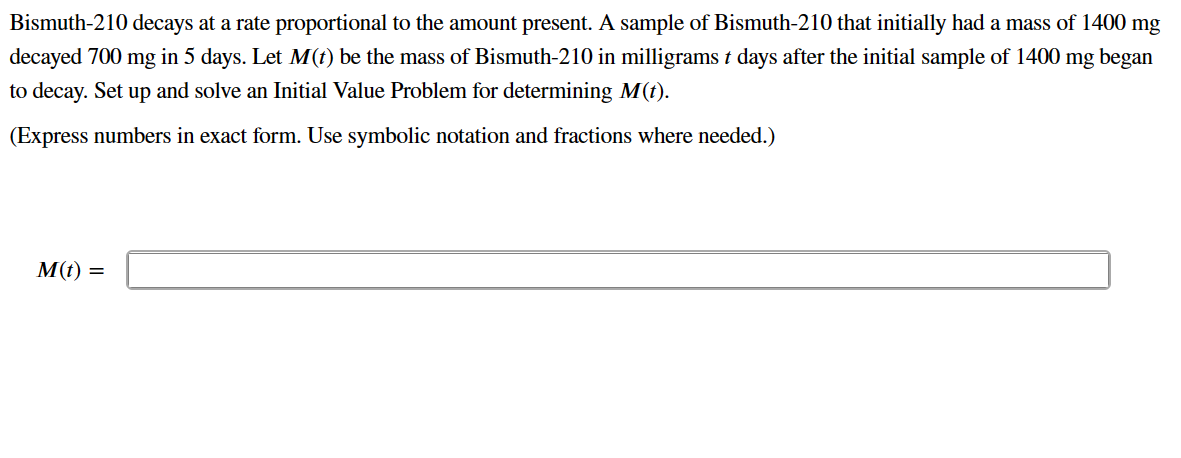Bismuth-210 decays at a rate proportional to the amount present. A sample of Bismuth-210 that initially had a mass of 1400 mg decayed 700 mg in 5 days. Let M(t) be the mass of Bismuth-210 in milligrams t days after the initial sample of 1400 mg began to decay. Set up and solve an Initial Value Problem for determining M(t). (Express numbers in exact form. Use symbolic notation and fractions where needed.) M(t) =
Bismuth-210 decays at a rate proportional to the amount present. A sample of Bismuth-210 that initially had a mass of 1400 mg decayed 700 mg in 5 days. Let M(t) be the mass of Bismuth-210 in milligrams t days after the initial sample of 1400 mg began to decay. Set up and solve an Initial Value Problem for determining M(t). (Express numbers in exact form. Use symbolic notation and fractions where needed.) M(t) =
Algebra & Trigonometry with Analytic Geometry
13th Edition
ISBN:9781133382119
Author:Swokowski
Publisher:Swokowski
Chapter5: Inverse, Exponential, And Logarithmic Functions
Section: Chapter Questions
Problem 15T
Related questions
Question
please with explanation because i want to understand how you solve it and thank you!!!

Transcribed Image Text:Bismuth-210 decays at a rate proportional to the amount present. A sample of Bismuth-210 that initially had a mass of 1400 mg
decayed 700 mg in 5 days. Let M(t) be the mass of Bismuth-210 in milligrams t days after the initial sample of 1400 mg began
to decay. Set up and solve an Initial Value Problem for determining M(t).
(Express numbers in exact form. Use symbolic notation and fractions where needed.)
M(t) =
Expert Solution
This question has been solved!
Explore an expertly crafted, step-by-step solution for a thorough understanding of key concepts.
This is a popular solution!
Trending now
This is a popular solution!
Step by step
Solved in 2 steps with 2 images

Recommended textbooks for you

Algebra & Trigonometry with Analytic Geometry
Algebra
ISBN:
9781133382119
Author:
Swokowski
Publisher:
Cengage

Algebra & Trigonometry with Analytic Geometry
Algebra
ISBN:
9781133382119
Author:
Swokowski
Publisher:
Cengage